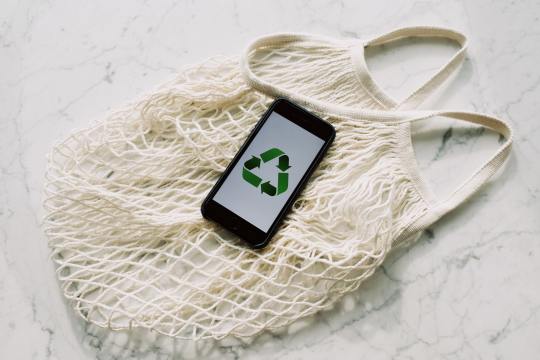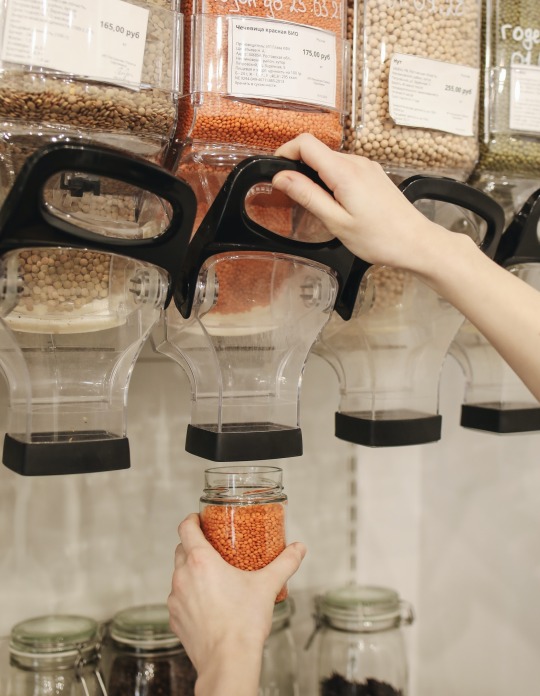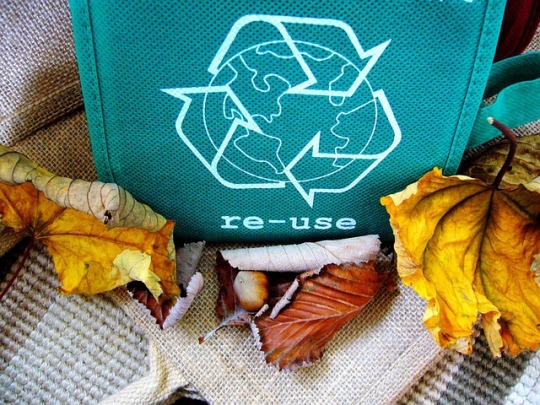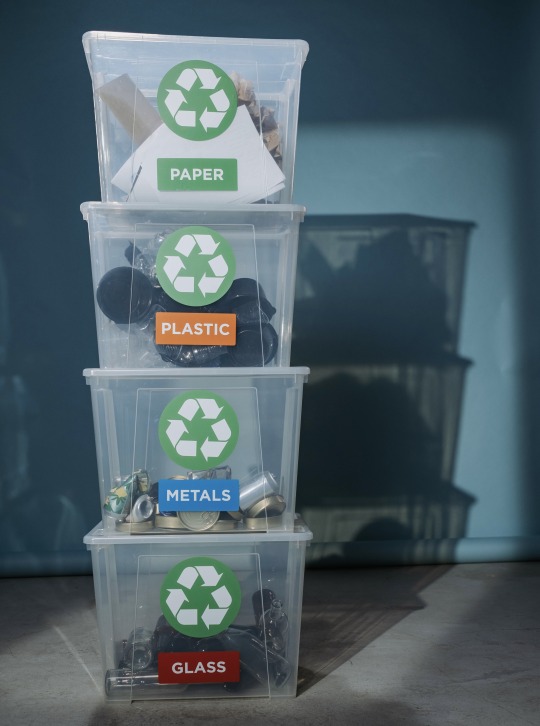#bulk recycled bags
Explore tagged Tumblr posts
Text
Bulk Recycled Bags: Eco-Friendly Choices
Choose bulk recycled bags for a sustainable solution that makes a difference. Perfect for events or giveaways, these bags help promote environmental responsibility while providing practicality.

0 notes
Photo
This is a solved problem.


#depending on your tolerance for waste and the availability of recycling many options exist#sadly dumb bags of paper is probably the best for the environment outside of scooping bulk bin flour into jars
117K notes
·
View notes
Text

Key Features of Rucksack Bags
Planning a trek or hike? A rucksack is a must-have for hassle-free travel, ensuring your essentials are stored securely, even on short day trips.
#recycle bags in bulk#recycle bags manufacturers#recycled bags wholesale#reusable bags manufacturer#rucksack bags manufacturer
0 notes
Text
Bulk Bags Recycling: Paving the Way for Sustainable Bulk Handling
Bulk bags, also known as Flexible Intermediate Bulk Containers (FIBCs), have revolutionized bulk handling and storage across industries. However, as the use of these bags grows, so does the need for effective recycling solutions. This blog explores the importance of bulk bags recycling, the challenges involved, and the steps toward a more sustainable approach.

Why Bulk Bags Recycling Matters
Bulk bags are widely used in agriculture, construction, and manufacturing due to their durability and capacity. While they are designed to be robust and reusable, their end-of-life disposal can pose environmental challenges. Recycling bulk bags is crucial for reducing waste, conserving resources, and minimizing the environmental impact associated with their disposal.
Recycling these bags helps prevent them from ending up in landfills, where they can take years to decompose. By repurposing the materials, we can reduce the demand for virgin resources and lower the carbon footprint associated with manufacturing new bags.
Challenges in Bulk Bags Recycling
Recycling bulk bags presents several challenges. One major issue is the contamination of the bags with various substances, such as chemicals or food products. Contaminants can complicate the recycling process and affect the quality of the recycled material. Proper cleaning and sorting are essential to address this challenge.
Another challenge is the lack of standardized recycling systems for bulk bags. The absence of uniform recycling protocols can make it difficult to establish efficient collection and processing methods. Developing consistent guidelines and facilities for recycling bulk bags is crucial for improving the effectiveness of recycling efforts.
Steps Toward Effective Bulk Bags Recycling
Design for Recyclability: Manufacturers can contribute by designing bulk bags that are easier to recycle. Using materials that are more readily recyclable and minimizing the use of additives that hinder recycling can improve the recyclability of the bags.
Implement Collection Programs: Establishing collection programs for used bulk bags can help ensure that they are properly recycled. This can involve setting up designated drop-off points or partnering with waste management companies to facilitate the collection process.
Improve Recycling Technologies: Investing in advanced recycling technologies can enhance the efficiency of processing bulk bags. Innovations in sorting and cleaning technologies can help address contamination issues and increase the quality of recycled materials.
Future Outlook for Bulk Bags Recycling
The future of bulk bags recycling is promising, with ongoing advancements in materials and technologies. As industries and consumers become more conscious of environmental sustainability, there is a growing push for better recycling practices and solutions.
Efforts to standardize recycling processes and increase awareness about the importance of recycling bulk bags will play a crucial role in achieving a more sustainable approach to bulk handling. By addressing the challenges and embracing innovative solutions, we can pave the way for a circular economy where bulk bags contribute to environmental sustainability rather than waste.
In conclusion, bulk bags recycling is essential for reducing waste and promoting sustainability in bulk handling. By overcoming challenges and implementing effective recycling strategies, we can support a more environmentally friendly approach and make a positive impact on our planet.
0 notes
Text

In January 2023, the Danish city of Aarhus launched a three-year trial project to curb the number of disposable coffee cups. Instead of chucking them away, locals can use deposit machines designed by Norwegian waste management company TOMRA.
The pilot programme set out to collect 500,000 cups in its first year, a target that was far exceeded as cups were returned 735,000 times, saving 14 tonnes of plastic from incineration and CO2 emissions.
One year on, Aarhus is now able to share its first results, in the hope more cities will follow suit.

The pilot did not only require building machines, deciding where to place them and creating the recyclable cups. Changing consumer behaviours was a necessary step to make the ‘reuse revolution’ happen.
To convince citizens, the initiative was initially supported by 45 cafes which agreed to only sell drinks in these cups, not giving consumers the choice to buy single-use plastic cups.
In the first weeks, the return rate was only around 25 per cent and it made Rossau doubt the system would pick up. For reusable cups to be a better alternative to their single-use counterparts they need to be recycled at least six times, reaching a return rate of 82 per cent.
A turning point came during the city’s week-long festival Aarhus Uke in September, where retailers in the event exclusively offered the reuse cups. Many more citizens were exposed to them and around 100,000 cups were returned, an amount which would have filled 1,200 trash bins.
The event, says Rossau, was useful for behavioural change as it familiarised a larger part of the population with the new recyclable product.

“We now see shifts in behaviour. We see people going with bags full of cups, which means they recycle in bulk, like for cans and bottles,” says Rossau. “Now we can see the return rate is 88 per cent, which means a cup is reused 44 times.
Euronews 11 Jan 2025
29 notes
·
View notes
Text
How to Writing multiple characters in a scene!!
Writing tips w/ Sunny (part 1, because I ramble and im positive ill end up doing this again if people want or for my own satisfaction)
This is just my methodology put in a way I think makes sense, if this doesnt apply to you thats okay everyone has different stradegies that work for them <33
SO lets begin.
"Rules" of writing multi character scenes + arcs, (First half is how to add them into a scene, second half is maintaining and not letting them vanish)
AHEM- Well there are four ways to place a character in a scene
Narration POV Aka the protagonist, this is the perspective ever present unless you CLARIFY the story is now through the lens of another character (Take for example my fic, while I play with multiple perspectives- a bulk is from Tims POV)
Secondary POV This is the character that DIRECTLY interacts with the narrator aka their "first point of contact" so to speak, they ground the narrator in the scene as not alone and is actually interacting with other people. (This DOES NOT have to be a speaking role, it can be purely observational if need be- but its the character that gets the most attention via the narrators perspective SIDE NOTE- THIS CAN SWITCH AS WELL)
Interactive POV Now we get to the "filling"- since Secondary doesn't need a direct tie to the narrator, you can have another character interact with the secondary character. But since they are not the focus of the scene its good to have a REASON they "Enter" or else if you spend so long giving the narrators perspective on #2 then you risk having someone "Materialize" in thin air. (This isnt really a concern unless you wait too long into the scene to go "Oh this guy exists-" you have time as you paint the reader a picture of the new enviornment/scene)
Enviorment POV Last but most certainly not least (and the one i've seen people struggle with the most) is the character that is PRESENT A N D NAMED- But serves no plot importance/relevance (to the narrator) during the opening part of the scene.
To put in better perspective- think of being in a room, The Narrator is you observing your surroundings (depending on POV style how "into the mind" of the narrator we go)
Secondary is the person you focus on, you hear their conversation, see their body language, expression, clothing, etc. They are the personal "focus" (there can be multiple as well)
Interactive is people SURROUNDING the focus, those who still play a semi active and visible role. They can either be within your line of sight interacting with the enviorment or speaking to a secondary/narrator character.
Enviorment is the person in the back of class that you know, but don't really register unless they do/say something- but you are still AWARE of their presence. CAREFUL NOT TO INTRODUCE THEM TOO LATE, OR ELSE YOU HAVE THE "MATERIALIZE" PROBLEM AGAIN
Now into a scene(aka recycling an old one)
Tim starred ahead silently from his side of the couch, watching Jason fidget with the soda tab on his shitty off brand Doctor Pepper he always insisted on getting. Around and around over and over, it was giving him second hand anxiety.
Thankfully they weren't forced to stay in the moment as Dick leaned over and pressed his shoulder into Jasons with a beaming smile "Oh come on it'll be fun"!
"Says you golden boy" Steph teased, half hanging off her chair and a foot almost knocking over Cass chip bag, only stopped by the fact Duke snatched it and moved it further along the table.
Well at least Damian seemed to be reacting rationally, seeming intent on slouching in on himself the more Dick tried to pull him and Jason together into a "group hug". It was a wonder his arms could even reach that far- even more so that they were still intact.
But Jason, like the rest of them, was weak to Dicks puppy dog eyes. Tim saw the moment he gave up a losing battle and his shoulders slumped in defeat, though his scowl ever present. "If I say yes will you fuck off"
"Ah ah language, we have children here"! Dick gasped, placing his ears on Damians ears which only earned him a snarl in return.
"I don't think Damian counts as a kid- and I just turned 16 which is basically an adult" Duke tried to defend, but his 'fierce glare' had less effect with his hand stuck in a bag of gummy worms.
Tim huffed- if Dick kept it up, they would end up with "family night", and he doubted all of them would come back alive.
(END SCENE)
Now to break down- Tim was of course the "Narrator" perspective that was viewing the scene, we get his insight even while not directly interacting with the characters just by his description tone.
Jason was of course the main "Secondary"character (though Dick was a mix as well) where the scene introduced by Tims perpective and tone by someone else in the enviornment.
Then you have Dick who is a perfect mix of Interactive character (how he entered the scene via movement, placing himself in perspective to the established other two) while shifting to have the most "scene impact" whilst still not being Tims focus.
Finally you have everyone else serving as Enviornment characters, with either a simple Line-action (ex-Steph) or a name drop in general placement (Cass) or establishment through movement, and only relevent later in the scene (Duke).
Damian kind of floats between, he is introduced via a reaction + Narrator observation, but then is mostly just an eviornment character. He is THERE but not really awknowleged beyond that.
NEXT- If that doesn't help much you can rely on "Environment rule"
Aka everyone is always doing something in any space they occupy- apply that to your characters. It can be as simple as when you have one character speak loudly to the narrating POV, another character shifts away or laughs.
They didn't need to speak nor did you need to detract from the tension/pacing of a scene by describing in detail their expression, positon, etc.
BUT in that moment your reader just clues in to "Oh okay x is here-" that is established, and whether or not x plays a role in a future scene within that enviornment doesnt matter much.
This is also the PERFECT oppertunity to give characterization. If a tense moment is going on you can have the narrator notice another character stiffen/flinch (aka affected by the conflict, even if not an active participant)
FINAL PART- MAINTAINING
This is where shit can hit the fan f a s t- getting a bunch of characters in a scene is one thing but keeping them there?? Hell at times.
But once again this all relies on "Narrator perspective" and unless you are switching narrators, you need a "cone of vision" to determine what is or isn't important unless you might break the tension of a scene.
Methods include-
Reactions
Two+ background characters interact (verbal or not)
Interact with enviornment
Enter/Leave a space (of note)
A sound registered but not explored (a chair creaking back, a glass dropping, snack bag rustling, or even my favorite which is the sudden absense of sound implying an audience)
"Incidents" (Someone drops something, attention goes to them for a sec- apology/oneliners, then switch back)
Check ins from NON NARRATOR, (or narrator, but usually works better to keep track of who is focused on who)
Characters don't need to be "ever present" just remind your reader they exist somewhere generally in the scene (and keep them in your back pocket)
But The best possible tool at your disposal?? BANTER.
Let characters interact, feel out their dyanmics- If you dont know how they interact in non tense situations, how does that change when tension amps up. Have a background character throw in a one liner- or the narrator observe a conversation they aren't a part of.
LET PEOPLE BE PEOPLE- And they basically write themselves
Last but not least- if you feel stuck or lost?? Treat EVERYONE like a narrator.
Who are they paying attention to? What are they seeing? How do they REACT to that? Do they speak up, do they tense, do they try and slip away or stay strong?
You don't need to know this for EVERY scene- but sometimes it helps out of a rut moment
ANYWAYYSS- This is my rant and personal methodology of how I place/maintain multiple characters. I hope this helps for anyone interested, if not find what works for you!!
My Asks are open if anyone wants me to give any other advice, tips, or just general ramblings about writing.
Otherwise,
Happy writing!!
#sunnys writing tips#sunnys writing#writing tips#writing advice#fic help#writing help#my ramblings#may or may not work#up to you#ao3#ao3 writer#ao3 fanfic#my fanfic writing#fanfic writer#my writing#writing#fanfiction writer#writeblr#writers on tumblr#fanfic writers#writerscommunity
37 notes
·
View notes
Text
Zero waste pet ownership is a great thing to aspire to. Stick to safe, all natural toys made with renewable and compostable materials. If and only if your vet says that it's safe you can make food from scratch, or find some pet food bulk bins. If your cat is agreeable, use pine pellets for litter. Et cetera.
But it's 100% ok if that's not something you can do. My dog's favorite toy is made of polyester, and my cats only eat food that comes in non recyclable bags. And that's totally fine, because you have to recognize one thing: these animals' lives are our responsibility. Sacrificing their health, safety, or happiness for a tiny amount of difference in carbon use is not ok.
Understand that your priorities must be well aligned. This extends beyond pet care, and to all different kinds of consideration towards animals. It's fine to be vegan, but remember that all "vegan leather/wool" is plastic, and its production and degradation are terrible for the environment and the animals in it. It's great to focus on a plant based diet, but you must remember that the purchase of out of season fruits and vegetables create more waste and carbon emissions than simply buying local. There's nuance to all this, and you must have patience for both yourself and others.
Love your pets, and breathe easy. There's plenty of other aspects of living where you can prioritize a low impact lifestyle, without forsaking our beloved furballs.

#zero waste#sustainability#anti consumerism#anti consumption#eco friendly#sustainable#environment#pets#pet care#cats#dogs#cat#dog#animal#animals#animal care
91 notes
·
View notes
Text
Everything You Need to Know About Hotel Supplies
The hospitality industry thrives on its guests' comfort, satisfaction, and experiences. One often overlooked yet essential component is hotel supplies. These are the unsung heroes who transform ordinary stays into unforgettable experiences.

Why Hotel Supplies Are Crucial for Hospitality Success
Importance of Guest Experience
Think about it: when you stay at a hotel, what makes the experience memorable? Are they soft, luxurious sheets or eco-friendly toiletries? Hotel supplies are pivotal in ensuring guests feel pampered and valued.
Building a Competitive Edge in the Hospitality Industry
In an era of fierce competition, providing top-quality amenities can set you apart. Guests now compare even the smallest details, making your supplies a key differentiator.
Essential Categories of Hotel Supplies
Bedding and Linens
Nothing beats the feeling of sinking into a soft, clean bed after a long day. Premium-quality sheets, comforters, and pillows are must-haves.

Furniture and Fixtures
Sturdy, elegant furniture like desks, wardrobes, and lighting fixtures enhance comfort and functionality.
Bathroom Supplies
Toiletries and Towels
Could you stock up on shampoo, conditioner, body wash, and fluffy towels? High-end products leave a lasting impression.
Shower and Bath Accessories
From non-slip mats to rainfall showerheads, these small touches elevate luxury.

Lobby and Reception Supplies
Signage and Stationery
Ensure clear, professional signage and quality stationery for seamless guest communication.
Waiting Area Comfort Items
Think plush seating, magazines, and water dispensers to make guests feel at home.
Advanced Hotel Supplies for Modern Guests
Smart Room Technology
Guests expect convenience, and smart technology—like keyless entry and voice-controlled devices—delivers just that.
High-End Coffee and Snack Stations
Gourmet coffee machines and locally sourced snacks can create a memorable, personalized experience.
Sustainable Hotel Supplies
Eco-Friendly Toiletries
Swap single-use plastics for biodegradable options to impress eco-conscious travelers.
Recyclable Packaging and Biodegradable Products
From soap wrappers to laundry bags, sustainability can shine through thoughtful choices.
Energy-Efficient Appliances and Lighting
Save on costs and reduce your carbon footprint with energy-efficient solutions.

Choosing the Right Hotel Supply Vendors
Factors to Consider When Choosing Vendors
Look for reliability, quality, and competitive pricing. Ensure your vendor aligns with your sustainability goals.
How to Build Long-Term Relationships with Suppliers
A strong partnership can lead to better deals and consistent supply. Communicate your needs and expectations clearly.
Trends in the Hotel Supplies Industry
Personalization in Amenities
From monogrammed towels to custom-scented toiletries, personalization is in high demand.
Increased Focus on Sustainability
Hotels invest more in green practices, and your supplies should reflect this trend.
Technology-Driven Innovations
Automation in housekeeping and inventory management is revolutionizing the way hotels operate.
Budgeting for Hotel Supplies
Cost-Effective Buying Tips
Buy in bulk, negotiate discounts, and compare suppliers to get the best deals.
Balancing Quality and Affordability
Invest in items that provide long-term value, even if they cost more upfront.

FAQs About Hotel Supplies
What are the must-have hotel supplies? Essentials include quality bedding, toiletries, and energy-efficient appliances.
How can hotels ensure sustainability with their supplies? Opt for eco-friendly products and reusable materials to minimize waste.
How do I choose the right vendor for hotel supplies? Research their reputation, compare prices, and ensure they offer consistent quality.
Are personalized amenities worth the investment? Yes! Personalized touches can create a memorable experience and foster guest loyalty.
What role do hotel supplies play in guest satisfaction? High-quality supplies significantly enhance the guest experience, leading to better reviews and repeat business.
2 notes
·
View notes
Text
Why Poly Bags Are Essential for Retail and Industrial Packaging

In the world of packaging, few tools can compare to the versatility and utility of poly bags. From retail businesses to industrial sectors, these unassuming plastic sacks are essential for modern packaging solutions. But beyond their common use, poly bags offer a multitude of benefits across various industries. Whether you’re in retail, manufacturing, food, healthcare, agriculture, or event planning, understanding the importance of poly bags—and why they’re crucial—can optimize your operations and improve your bottom line.
Understanding Poly Bags
Poly bags, short for polyethylene bags, are made from a type of plastic known for its durability and flexibility. They come in various sizes, thicknesses, and designs, including open flat bags, gusseted bags, zipper bags, and more. Their adaptability to different packaging needs makes them an ideal choice for a wide range of applications.
The Benefits of Using Poly Bags
1. Versatility Across Industries
Poly bags cater to diverse needs, making them a staple in industries like retail, food, and healthcare. In retail, they serve as an economical packaging option for clothes, electronics, and hardware. In the food sector, their food-safe properties make them ideal for storing perishables safely. Healthcare sectors utilize them for sterile packaging of medical supplies, ensuring contamination-free storage.
2. Cost-Effective Solution
One of the main advantages of poly bags is their cost-effectiveness. Their lightweight nature reduces shipping costs, while their affordability makes them a budget-friendly option for businesses looking to optimize their packaging expenses without compromising quality.
3. Durability and Protection
Poly bags provide an unsurpassed level of protection for products against dirt, moisture, and damage during transportation and storage. The InfinitePack 1 Mil Clear Plastic Flat Open Poly Bags, for instance, boast extra strength and durability. Their 1 mil thickness ensures that even delicate items remain intact and protected.
4. Customization Options
Businesses can customize poly bags with logos, designs, and branding, offering a unique marketing opportunity. Custom-printed poly bags help reinforce brand identity and enhance the customer experience by adding a professional touch to packaging.
5. Eco-Friendly Options
In response to growing environmental concerns, many manufacturers now offer eco-friendly poly bag options made from biodegradable or recyclable materials. These alternatives allow businesses to maintain their commitment to sustainability while still enjoying the benefits of traditional poly bags.
Applications of Poly Bags in Key Industries
Retail Businesses
Retailers benefit from poly bags' affordability and convenience, using them for packaging clothing, accessories, and other merchandise. Their transparency allows customers to view products easily, enhancing the shopping experience.
Manufacturers and Distributors
For manufacturers and distributors, poly bags streamline the packaging process with their versatile application in bulk storage, transportation, and protection against environmental elements.
Food Industry
Poly bags play a critical role in the food industry, meeting all food safety requirements. The food-grade quality of bags like the InfinitePack ensures safe storage of perishables, snacks, or prepared meals.
Healthcare and Pharmaceutical Industry
In healthcare, sterile packaging is crucial. Poly bags provide a hygienic solution for storing medical instruments, supplies, and pharmaceuticals, reducing the risk of contamination.
Agriculture and Landscaping
Farmers and landscapers use poly bags for seed storage, plant protection, and packaging fertilizers. Their durability withstands the rigors of outdoor conditions, ensuring the integrity of agricultural products.
Event Planners and Marketers
For event planners and marketers, poly bags offer a convenient way to package promotional materials, giveaways, and event supplies. Customizable options also allow for branded packaging that enhances event visibility.
Highlighting InfinitePack 1 Mil Clear Plastic Flat Open Poly Bags
The InfinitePack 1 Mil Clear Plastic Flat Open Poly Bags serve as an excellent example of the versatility and efficiency of poly bags. Here are some key features and benefits:
Exceptional Value & Quality: Made from high-quality materials, providing extra strength and durability.
Stock Up for Any Occasion: Perfect for a variety of uses, from holiday treats to small item storage.
Perfectly Sized & Durable: Measuring 18" x 24" with a sturdy 1 mil thickness, they cater to multiple needs.
Food-Grade & Safe: Certified food-safe to meet all storage requirements, with options for heat sealing or twist tie closure.
Multi-Purpose Utility: Suitable for storing food, organizing supplies, and protecting items from dust and damage.
2 notes
·
View notes
Text
I'll want to break down the chicken and beef into pre-marinaded freezer baggies with any roots or beans or sauces paired with them in a lil bundle of baggies, that way meals become as simple as popping a baggie set into a cast iron in the oven or on the stove. The last of the current priority garden, home, and body ingredients are in the mail, and I'm just waiting until I have the last of my salts and amino acids to mix them up.
Upcoming projects:
1) add compost cultivator to The Stacks now that there is a sizeable hay patch and an existing decomposition culture to support
2) Start tree seed trays (wild plum and black cherry)
3) Start greens seed trays (amaranth, turnip, beet, collard)
4) start shrub seed trays (Alleghany blueberry)
5) start wildflower seed trays (flax, marshmallow)
6) bury seed trays in coco coir and compost when The Stacks are fully decomposed
7) infuse olive oil with shea butter cubes, resins, cracked seeds, and salts in pourable cruets
8) break down chicken and beef into ready-prep single meal and bulk meal portions and freeze (burger/meatloaf mix, chili mix, carne asada, carne criolo, buttermilk chicken for battered cutlets, pulled chicken and ranch for pizza root-fries, kung pao chicken, green curry chicken, pulled chicken for matzoh soup, meatballs, lemon garlic chicken, ground beef crumbles, Date Night Steaks, sliced roast beef packets, jerky, BBQ for beans, dumpling filling, seasoned battered chicken for fried chicken strips and cheesy chicken pasta/veggie-noodle lasagnas, etc)
9) sauce tomatoes and freeze
10) bake a round of washing soda
11) ferment some rice for washing cakes and scalp scrubs
12) mix laundry detergent (epsom salts, resin infused oils, seed infused oils, washing soda, hand soap)
13) mix body scrubs
14) mix and set washing cakes
15) mix and jar scalp scrubs
16) mix and jar hair cremes
17) mix and jar hair masques
18) mix and jar skin masques
19) mix and bottle serums
20) mix and bottle texture spray
21) mix and jar bath salts
22) deep clean kitchen (wash counters, wash sink, treat drain, sweep and mop floors, wash cabinetry, wash appliances, run cleaning cycles on oven and dishwasher, clean out traps and catches, wash trash can and deoderize, empty and sanitize recycling bag, clean cat cozies, sanitize kitty meal plates, sanitize communal water fountain, sanitize water pitcher and replace filter, etc)
23) juice citrus (lime, lemon) and bottle/refridgerate
24) make citrus paste (lime, lemon) and freeze
25) make chimichurri base and freeze
26) make basil, garlic, and sesame paste and freeze
27) make kefir
28) make garlic confit and freeze
29) make caramelized onions and freeze
30) make pepper paste and pepper jelly and freeze
31) make pickles (onion, garlic, peppers, sundried tomato) and freeze
32) make curried carrot and lentil soup and freeze
33) make chicken stock and freeze
34) make kimchi
35) make samosa and empanada wrappers (corn masa pastry dough)
36) make dumpling wrappers (rice paper)
37) make and freeze dumplings, samosas, and empanadas (veggie mince, meat mince, kimchi and rice, Oaxaca and honey, Oaxaca and beans, Oaxaca and pepper jelly, curry chicken, veggie curry)
38) mix and bag sazon rice packets
39) prep herb and spice mix bottles
40) season and freeze root-fries and root-wedges
41) marinade and freeze veggie side dishes
42) air fry and package chickpea pops
43) make candied snickie snacks (nuts, jerky, coffee beans, carrots, citrus)
44) cut and batter Oaxaca strips for battering (seasoned lentil and rice flour) for paneer pakora and fried cheese sticks
45) cut Oaxaca strips for cheesy pastas
46) make and freeze queso fundido (Oaxaca cubes, peppers, garlic confit, coriander, oregano, paprika, chili pepper flakes, cumin, salt, cracked peppercorns, sundried tomatoes, shea butter curls, buttermilk, meatmince)
47) mix and freeze omelet/egg casserole mixes (queso fundido, onions, salt and pepper, fresh herbs, liquid whole egg mixed with buttermilk and rice flour, sundried tomato mince)
48) repot Pomegranate in compost and coco coir
49) identify and butcher the rooster
50) source scrap wood for laying nests, cat climbers, garden stakes, cat toys, chicken toys, carry/storage crates, etc)
51) mix dehumidifer/air filter pack for upstairs bathroom
52) deep clean upstairs bathroom (wash sink, wash floors, wash toilet, wash cabinetry, refill hand soap, wash counters, polish hardware, wash mirror)
53) wash towels and hang out to dry
54) wash blanket/bed linens and hang out to dry
55) wash clothes and hang up to dry in rounds of 2× outfits or 1× linens per basin
56) deep clean our bathroom (wash sinks, wash counters, sweep and wash floors, wash cabinetry and walls, refill deoderizer, clean shower, polish hardware, wash mirrors, refill hand soap, organize shower and sink products, wash toilet)
57) deep clean bedroom (take out trash bins, pick up floors, vacuum and sanitize carpets, wash walls, organize clothes, organize dog toys, sanitize dog meal dishes, wash and polish side tables/trunk, wash bedframe, sanitize mattress, change sheets and blankets)
58) vacuum and sanitize upstairs carpets
59) wash walls upstairs
60) clean guest bedroom (sanitize mattress, wash and replace bed linens and blanket, pick up floors)
61) move office couch to living room
62) move office desk/supplies to guest bedroom (for now)
63) plan a workout routine (minimum 2x gym days/wk for rowing and cycling and traction, min 2 home workouts/wk -> prioritize range of motion, balance, and gradual endurance building)
64) plan a hygeine routine (min 3x wash day/wk for skin, max 1x wash day/wk for hair)
65) organize my next round of plans
4 notes
·
View notes
Text
Recycled Bags Wholesale: Green Your Brand
Shop recycled bags wholesale to enhance your brand's eco-friendly image. These bags are perfect for promotions, retail, or community events, offering quality and sustainability in every purchase.

0 notes
Text
Green Living Made Easy: Eco Shopping Tips
Live a Greener Life: Sustainable Shopping and Living Tips with Brandfinity
Brandfinity, a leading branding and marketing agency in India, is committed to promoting eco-conscious practices. In line with this mission, we present these valuable tips to help you make sustainable choices in your everyday shopping and living:
Embrace Sustainable Materials for Clothing and Home Goods:
Opt for eco-friendly options: Look for clothing and home goods made from organic cotton, hemp, or bamboo. These materials often require less water and fewer chemicals compared to conventional options.
Reduce waste, support circularity: Choose products made from recycled or upcycled materials. This not only minimizes waste but also promotes a circular economy where resources are reused.
Support Local and Organic Produce:
Reduce your carbon footprint: Opt for locally grown fruits and vegetables. This not only supports local farmers but also reduces the environmental impact of transportation.
Prioritize health and a healthy planet: Choose organic produce to avoid harmful pesticides and synthetic fertilizers that can negatively affect your health and the environment. Organic farming practices promote soil health, biodiversity, and water conservation.
Minimize Waste with Reusable Bags and Containers:
Ditch the plastic: Invest in reusable shopping bags made from durable materials like canvas or recycled materials. This eliminates the need for single-use plastic bags, significantly reducing waste.
Embrace reusables for bulk items: Utilize reusable containers when buying bulk items like grains, nuts, and spices. This eliminates the need for single-use packaging, further minimizing waste. Remember to wash and sanitize your reusable bags and containers regularly.
Champion Eco-Friendly Brands and Products:
Look for certifications: Support brands and products with certifications that showcase their environmental commitment, such as organic, fair trade, or cruelty-free labels. These certifications ensure adherence to specific standards and minimal harm to the environment and workers.
Sustainable practices matter: Choose brands that prioritize sustainability throughout their supply chain, from sourcing materials to manufacturing and packaging. By supporting these brands, you encourage more sustainable business practices with your purchasing power.
Embrace Sustainable Fashion with Second-Hand and Thrift Shopping:
Reduce demand, extend lifespans: Consider second-hand and thrift stores for unique and stylish clothing at affordable prices. This reduces the demand for new clothing production and gives pre-loved items a second chance.
Promote a circular fashion economy: By choosing second-hand fashion, you contribute to a circular economy by extending the lifespan of clothing and minimizing textile waste. Don't forget to donate or sell your own unwanted clothing to keep the cycle going!
Live a greener life, one sustainable choice at a time!
Partner with Brandfinity to craft an eco-conscious brand identity and marketing strategy that resonates with your sustainability goals. Visit us at https://brandfinity.ch/en/ to learn more.
#business#wix#logo design#ui ux design#cms development services#marketing#web developer#website#e commerce#education
4 notes
·
View notes
Text

Top Qualities in Rucksacks
For camping or hiking, a rucksack offers the perfect balance of comfort, storage, and durability, making your trip seamless.
#rucksack bags supplier#wholesale recycle bags manufacturer#bulk rucksack bags#rucksack bags manufacturers#rucksack bags vendors
0 notes
Text
Breathing New Life into Waste: The Art of Bulk Bags Recycling
A Green Revolution Unveiled
In a world where environmental consciousness reigns supreme, the concept of bulk bags recycling emerges as a beacon of sustainability. These versatile containers, once deemed as waste, find a new purpose through the art of recycling, contributing to a greener and cleaner planet.

The Journey of Discarded Giants: Understanding Bulk Bags
Bulk bags, also known as Flexible Intermediate Bulk Containers (FIBCs), are an integral part of industries that rely on efficient storage and transportation. Once they have fulfilled their primary duty, these bags often end up as discarded giants, awaiting a second act in the grand theater of recycling.
The Recycler's Canvas: Transforming Bulk Bags into Raw Materials
Bulk bags, with their durable polypropylene composition, make for excellent candidates for recycling. The process involves collecting, cleaning, and shredding the bags into raw materials. This recycling alchemy transforms what was once waste into valuable resources for the creation of new products.
Environmental Harmony: The Green Impact of Bulk Bags Recycling
The environmental benefits of bulk bags recycling are manifold. By diverting these containers from landfills, we reduce the burden on waste disposal systems. Moreover, the energy saved in the recycling process compared to manufacturing new bags contributes to a significant reduction in carbon emissions.
Closing the Loop: The Cycle of Sustainability
Bulk bags recycling is not just a one-time affair; it's a continuous cycle that promotes sustainability. As recycled materials are reintroduced into the manufacturing process, the need for virgin resources diminishes, lessening the environmental footprint of these essential containers.
A Symphony of Renewal
In the realm of waste management, bulk bags recycling is a symphony of renewal. What was once considered waste now plays a vital role in creating a more sustainable future. As we embrace the art of recycling, we not only extend the life of these discarded giants but also contribute harmoniously to the well-being of our planet.
0 notes
Text
Hey all!
I’ve been gone a while, but I return with food 😋
I have a Ninja Creami, that I’ve used to make ice cream a few times. But I didn’t like that all the “official” ice cream recipes call for cream cheese…which is a weird ingredient I think.
Also ever had frozen milk? That gross texture, was how my ice cream turned out.
Barf.
So I trolled around online, and found a recipe for coffee ice cream that looked promising. Except for the fact that I HATE coffee lol
Instead, I brewed some strong black tea that I love.
It’s butterscotch. ‘Nuff said.
And it turned out AMAZING!!

But it needed a little something more…something like caramel!
I had some I’d bought from the store, pre low waste journey, but it soon ran out.
And by now my hunger for butterscotch black tea ice cream was insatiable.
So what was a gal to do?
Simple! I’ll just make my own caramel.
For the first time…
It’ll be fine right?
…
…
And it WAS!

Delicious!!
So proud of me, making low waste ice cream and caramel sauce 💖
*tea is loose leaf, and is composted after brewing. The milk/cream I used for ice cream is purchased in recyclable containers. Only the lids themselves are garbage. Sugar, salt, and vanilla extract are purchased from my local bulk foods store-in reusable bulk bags, and one small glass container I reuse for the vanilla.
#low waste#solarpunk#zero waste#food brag#butterscotch black tea ice cream#homemade caramel#I was worried the caramel would be difficult#but it wasn’t#ninja creami
4 notes
·
View notes
Text
The 3 R's of Waste Management
Reduce, reuse, and recycle.

The 3 R's are the necessary foundations of conservation and waste management techniques for a more sustainable lifestyle.
Sustainability, in its environmental definition, is the ability to maintain conditions supporting biological life on Earth by preserving natural resources. The continued prevalence of diminished natural resources due to the rise in greenhouse gas emissions, such as carbon dioxide and methane, from human activity over the past decades has impacted our course of sustainability on planet Earth. However, reducing, reusing, and recycling materials will lessen energy consumption instead of mining, extracting, and producing new goods with raw materials. These forms of waste management will allow trees to be planted in areas to lessen the carbon dioxide in the atmosphere that would otherwise be used as landfills for trash.
Reduce
Overconsumption of products that yield mass amounts of trash can contribute to the problem that waste management is trying to fix. Being aware of the issue at its roots and diminishing the need to throw away items can better sustain and handle the waste output that one is producing. Reducing the amount of discarded waste can also lessen the need to reuse or recycle items constantly.
Some ways to reduce and use preventative measures are to:
use reusable forms of everyday daily items such as reusable beeswax food wraps, washable utensils, electric lighters, metal razors, and recycled grocery bags
compost compostable foods at compost centers in your state
shop at zero-waste grocery stores in your state
avoid throwaway items such as single-use cutlery and dishes
replace paper items with fabric or cloth options such as fabric napkins, dishcloths, and cotton paper towels
buy products in bulk as opposed to small, single-use containers

Reuse
Often, it can be easy to discard packaging or items that no longer work or have a use for them. Instead, one should put creativity into practice when thinking of ways to reuse an object instead of throwing it out entirely and increasing waste output.
Some ways to reuse common thrown-away items are to:
turn used milk, coffee, juice, and water cartons into birdhouses
grow seedlings in empty egg cartons
use empty plastic milk jugs for your garden in creative ways
clean out glass jars or containers and repurpose them as a storage component
sell or donate old clothes, furniture, appliances, etc., to those who can use it
reuse grocery bags to cover small trashcans or on your next trip to the store
utilize newspaper as a way to cushion fragile items for storage
use leftover wood as fuel for bonfires
donate old notebooks and books for children who are in need of them

Recycle ♻️
At times, it can be easier to throw away used goods rather than recycle them and allow them to redirect potential waste from landfills, conserve energy, and reduce the need to extract new materials for new products. According to the EPA, "recycling one ton of paper would save enough energy to power the average American home for six months, save 7,000 gallons of water, save 3.3 cubic yards of landfill space, and reduce greenhouse gas emissions by one metric ton of carbon equivalent (MTCE)."
Some ways to get started with recycling items can be to:
buy items that are made with recycled materials so that once it is used up, you can recycle them and restart the process
educate yourself on the plastic recycling symbols and learn what they mean and if they can be recycled
be aware of the fact that not all plastics can be recycled at certain facilities
clean out hazardous/unrecyclable contents before recycling items
choose to buy things that are made with water-soluble solutions instead of chemical-based solvents
look out for materials that local recycling facilities are accepting, and start collecting recyclable items
use public blue bins that indicate if they accept paper, glass, or plastic for an easy-access recycling system

Efforts to start being sustainable might seem to make a slight difference amongst the tons of trash thrown away daily, but having one person reuse, reduce, and recycle, can make a big difference in a healthier Earth.
Sources
“3rs - Reduce, Reuse & Recycle.” SustainableSA.Com, 2 Aug. 2016, www.sustainablesanantonio.com/practices-technology/reduce-reuse-recycle/.
“Basic Information Details | Paper Recycling.” United States Environmental Protection Agency, 21 Feb. 2016, archive.epa.gov/wastes/conserve/materials/paper/web/html/index-2.html.
“Climate Change Indicators.” United States Environmental Protection Agency, 1 Aug. 2022, www.epa.gov/climate-indicators/greenhouse-gases.
“Climate Change, Recycling, and Waste Prevention.” Climate Change, Recycling and Waste Prevention from King County’s Solid Waste Division - King County, kingcounty.gov/depts/dnrp/solid-waste/programs/climate/climate-change-recycling.aspx. Accessed 1 July 2023.
Fahad. “3 R’s of Environment - Reduce, Reuse, Recycle.” Earth Reminder, 4 Jan. 2020, www.earthreminder.com/3rs-of-environment-reduce-reuse-recycle/.
#environment#recycle#reduce#earth#epa#environmentalism#climate change#climate justice#recycle reuse renew rethink#reusedmaterials#reduce reuse recycle#ecofriendly#sustainability#sustainable#recycled#environmetalists
8 notes
·
View notes